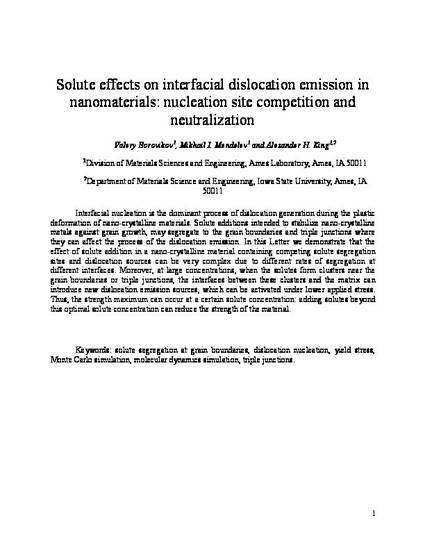
Article
Solute effects on interfacial dislocation emission in nanomaterials: Nucleation site competition and neutralization
Ames Laboratory Accepted Manuscripts
Publication Date
5-30-2018
Department
Ames Laboratory; Materials Science and Engineering
OSTI ID+
1467596
Report Number
IS-J 9737
DOI
10.1016/j.scriptamat.2018.05.011
Journal Title
Scripta Materialia
Abstract
Solutes added to stabilize nano-crystalline metals against grain growth, may segregate to grain boundaries and triple junctions where they can affect the process of the dislocation emission. We demonstrate that this effect can be very complex due to different rates of segregation at different interfaces. Moreover, at large concentrations, when the solutes form clusters, the interfaces between these clusters and the matrix can introduce new dislocation emission sources, which can be activated under lower applied stress. Thus, the strength maximum can occur at a certain solute concentration: adding solutes beyond this optimal concentration can reduce the strength of the material.
DOE Contract Number(s)
AC02-07CH11358
Language
en
Publisher
Iowa State University Digital Repository, Ames IA (United States)
Disciplines
Citation Information
Valery Borovikov, Mikhail I. Mendelev and Alexander H. King. "Solute effects on interfacial dislocation emission in nanomaterials: Nucleation site competition and neutralization" Vol. 154 (2018) p. 12 - 15 Available at: http://works.bepress.com/alex_king/74/
